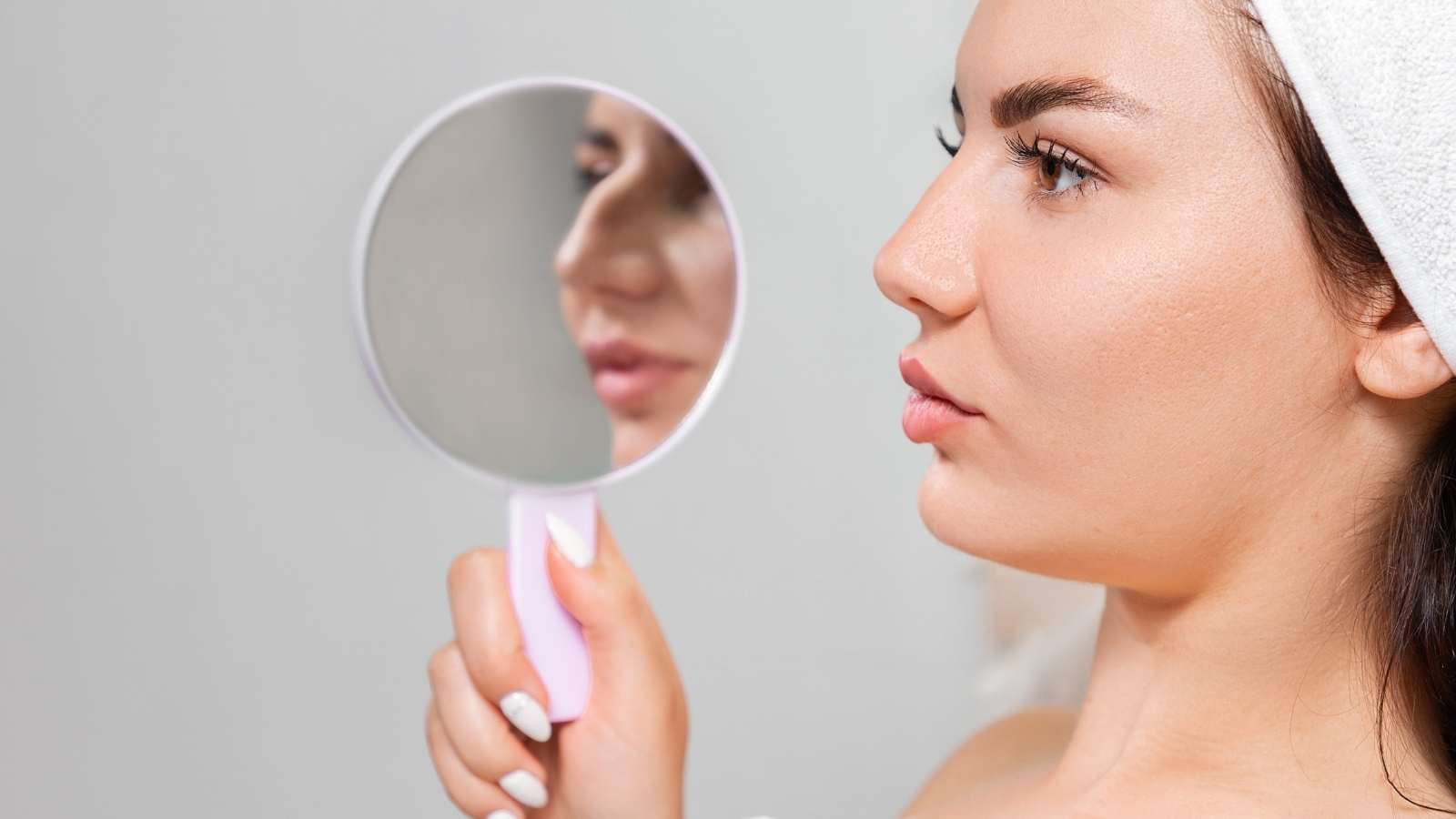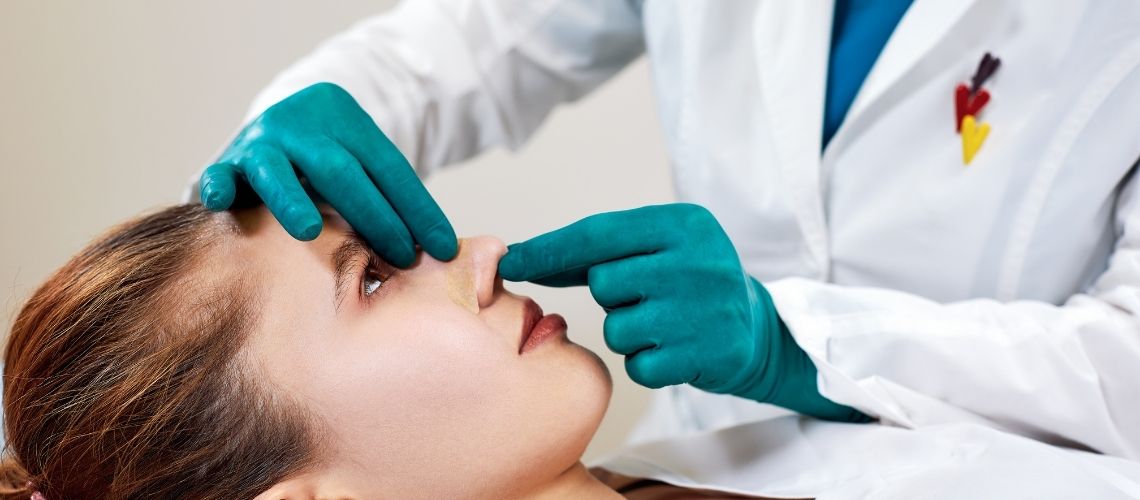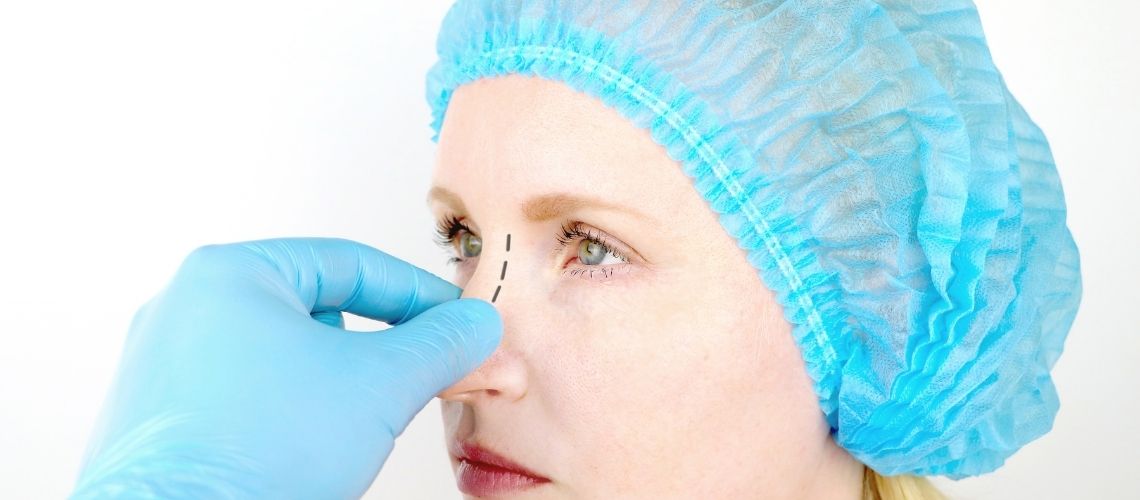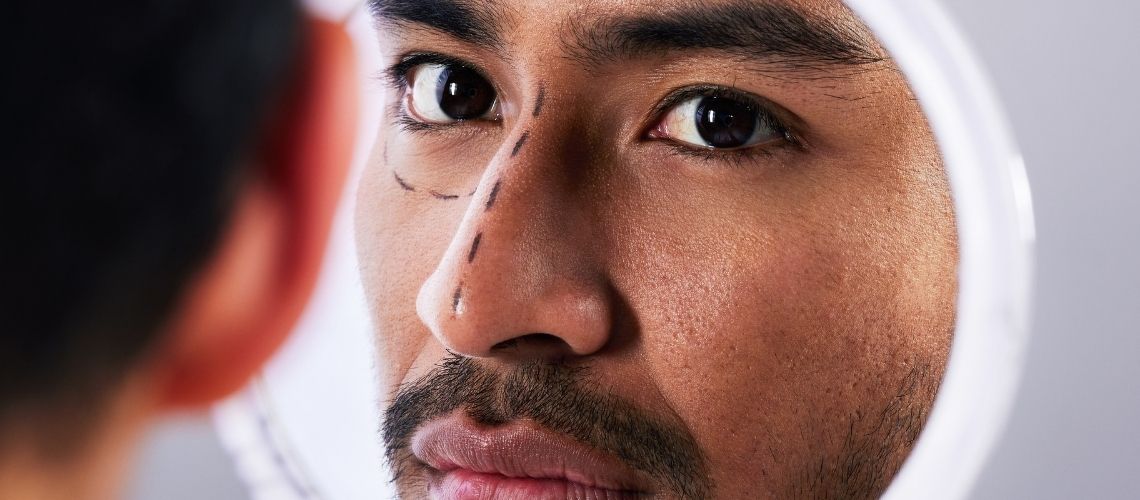Rhinoplasty is a delicate surgical procedure aimed at meeting both aesthetic and functional expectations. The postoperative period involves a healing process that requires patients to be patient and attentive. Swelling, bruising, and nasal congestion may occur for the first few months and are part of the natural healing process, gradually decreasing over time. The final results of the surgery may take about 12–18 months to fully emerge. During this period, patients can support their healing and achieve the best outcomes by diligently following their surgeon’s instructions.
What to Expect in the First Month After Rhinoplasty?
Rhinoplasty is considered to be in its most critical stage of healing during the first month post-surgery. During this time, patients may encounter swelling, bruising, and nasal congestion as a natural consequence of the operation. The first 48–72 hours are when swelling and bruising are most intense. Swelling can be particularly noticeable around the nose and the area around the eyes; however, keeping your head elevated and applying cold compresses can help alleviate these symptoms.
An external splint is used to maintain the new shape of the nose after surgery. Additionally, internal splints or soft supports may be placed and are usually removed after about one week. Nasal congestion and a small amount of bloody discharge during the first week are considered normal; blowing your nose should be avoided. Pain is generally mild and can be managed with prescribed pain relievers, but it is important to avoid medications that increase the risk of bleeding.
By the second week, swelling and bruising largely subside. The new structure of the nose becomes more noticeable, although swelling—especially around the nasal tip—may persist for a while. Most patients can return to light activities during this period but should still refrain from any activities that risk injury to the nose.
By the end of the first month, the changes in the nose become more evident, and patients can typically resume their normal routines.
How Does Recovery Progress in the Second Month After Rhinoplasty?
The second month following Rhinoplasty is a key milestone in the healing journey. By this stage, most of the external swelling and bruising will have diminished, though slight internal swelling may persist around the nasal tip and nostrils. This lingering swelling reflects the ongoing healing of the nose’s delicate structures and is usually no cause for concern. The shape of the nose begins to look more refined, and patients may notice the contours along the nasal bridge and tip becoming more defined. However, more time is still needed for the final outcome to become fully apparent.
From a functional standpoint, the second month is especially significant. As internal swelling decreases, the nasal passages open up more, and breathing typically becomes easier. Patients often notice a distinct improvement in breathing comfort. Nonetheless, it is crucial during this period to continue avoiding strenuous exercise and to protect the nasal structure. Light physical activities are generally safe in the second month, but any risk of bumping or trauma to the nose should still be avoided.
Regular follow-up appointments are one of the most critical aspects of postoperative care at this stage. Your surgeon will monitor your recovery, which is essential for the early detection and resolution of any potential issues.
Which Changes Occur in the Third Month After Rhinoplasty?
The third month following Rhinoplasty is an important phase in the healing process. By this time, most of the postoperative swelling has subsided, and the results of the surgical procedure can be observed more clearly in the contour of the nose. However, minor swelling in the nasal tip area may still be present and will gradually diminish, allowing the nose shape to become more defined.
The nasal tip, due to its complex anatomy, is typically the area that takes the longest to fully heal. In the third month, the tip of the nose becomes more distinguishable as subdermal structures heal, revealing finer details. Patients may notice the projection of the nasal tip and the overall appearance becoming clearer.
Early postoperative symptoms such as numbness or tingling often subside significantly by the third month. As nerve endings heal, sensation in the nasal region begins to normalize.
In open Rhinoplasty cases, the incision in the columella may still appear slightly pink or raised during the third month. However, over time it usually blends in with the surrounding skin and becomes less noticeable.
For patients who have undergone functional corrections, breathing continues to improve as internal swelling goes down. Although most daily routines are manageable at this stage, it is still important to avoid contact sports or any activities that could endanger the nose.
How Does the Nose Develop Between the Fourth and Sixth Months Post-Surgery?
During the fourth to sixth months after Rhinoplasty, the healing process reaches a significant stage. By this time, much of the initial swelling and bruising has faded. The nasal tip may still exhibit mild swelling, which gradually subsides, leading to a more refined nasal contour. The exact duration of this process can vary depending on each patient’s individual healing rate.
Additionally, the sense of smell typically returns to normal during this period. Any transient olfactory disturbances some patients may have experienced right after surgery often resolve largely between the fourth and sixth month, allowing them to reacquire their usual sensory experiences in daily life.
During this phase of ongoing stabilization of the nasal structures, the bones, cartilage, and soft tissues continue to adapt to the positions in which they were placed during surgery. Patients typically observe an outcome closer to the surgical objectives for their nasal profile and overall appearance.
Furthermore, many patients experience a notable improvement in their quality of life. With the nose taking on its postoperative shape, self-confidence often increases as patients enjoy the positive transformations in their body image. Most can comfortably resume their regular activities at this stage, though it is still important to avoid activities that might harm the nose.
What to Expect Between the Sixth Month and One Year After Rhinoplasty?
The sixth month marks a major turning point in the Rhinoplasty healing process. At this stage, the majority of postoperative swelling has dissipated, and the nose begins to exhibit a more defined version of its new shape. Any slight swelling that may still be present around the nasal tip is indicative of ongoing subdermal healing and will continue to subside over time.
Throughout this period, the nasal tissues—skin, cartilage, and bone—achieve greater stability and progress toward fully adapting. By around the one-year mark, the nose approaches its final aesthetic and functional form, reflecting a natural appearance and balanced structure. Patients can support their healing during this stage by following their surgeon’s guidance.
From the sixth month onward, patients who had functional issues addressed during Rhinoplasty typically notice significant improvements in their breathing. As internal swelling subsides, nasal airflow becomes more comfortable and efficient.
How to Care For and Protect Your New Nose After the First Year?
Proper, attentive care is essential to maintain the health and aesthetic results of the nose in the long term after Rhinoplasty. First and foremost, sun protection is crucial during this period. Since UV rays can be particularly damaging to the skin, regularly applying a high-SPF sunscreen to the nose area and wearing a wide-brimmed hat help minimize the risk of skin discoloration or tissue damage.
You should tailor your skincare routine to be gentle and mindful of postoperative sensitivity. Supporting the skin with mild cleansers and moisturizers helps form a healthy barrier during recovery. It is best to avoid harsh chemicals and abrasive treatments.
It is also very important to protect your nose from physical trauma. Exercise caution during daily activities to avoid bumping the nose, and use appropriate protective gear when engaging in contact sports.
In the postoperative period, keep a close watch on any changes in the nose’s shape, skin condition, and breathing function. If you notice any abnormalities, consult your surgeon promptly.
Finally, do not neglect long-term follow-up appointments. These visits are vital for assessing the stability of the nasal structure and obtaining advice tailored to your individual needs.

Op. Dr. Alev Camcıoğlu was born in Kırcaali in 1975. After attending Saint Michel French High School, he graduated from Kocaeli University Faculty of Medicine in 2001. After completing his specialization in Ear, Nose and Throat and Head-Neck Surgery in 2008, he fulfilled his compulsory service in various provinces and carried out his military service at the General Staff Headquarters. He worked at Istanbul Hospital and Nişantaşı Hospitals. Currently, he provides nasal aesthetics services at his private clinic in Istanbul Nişantaşı.









